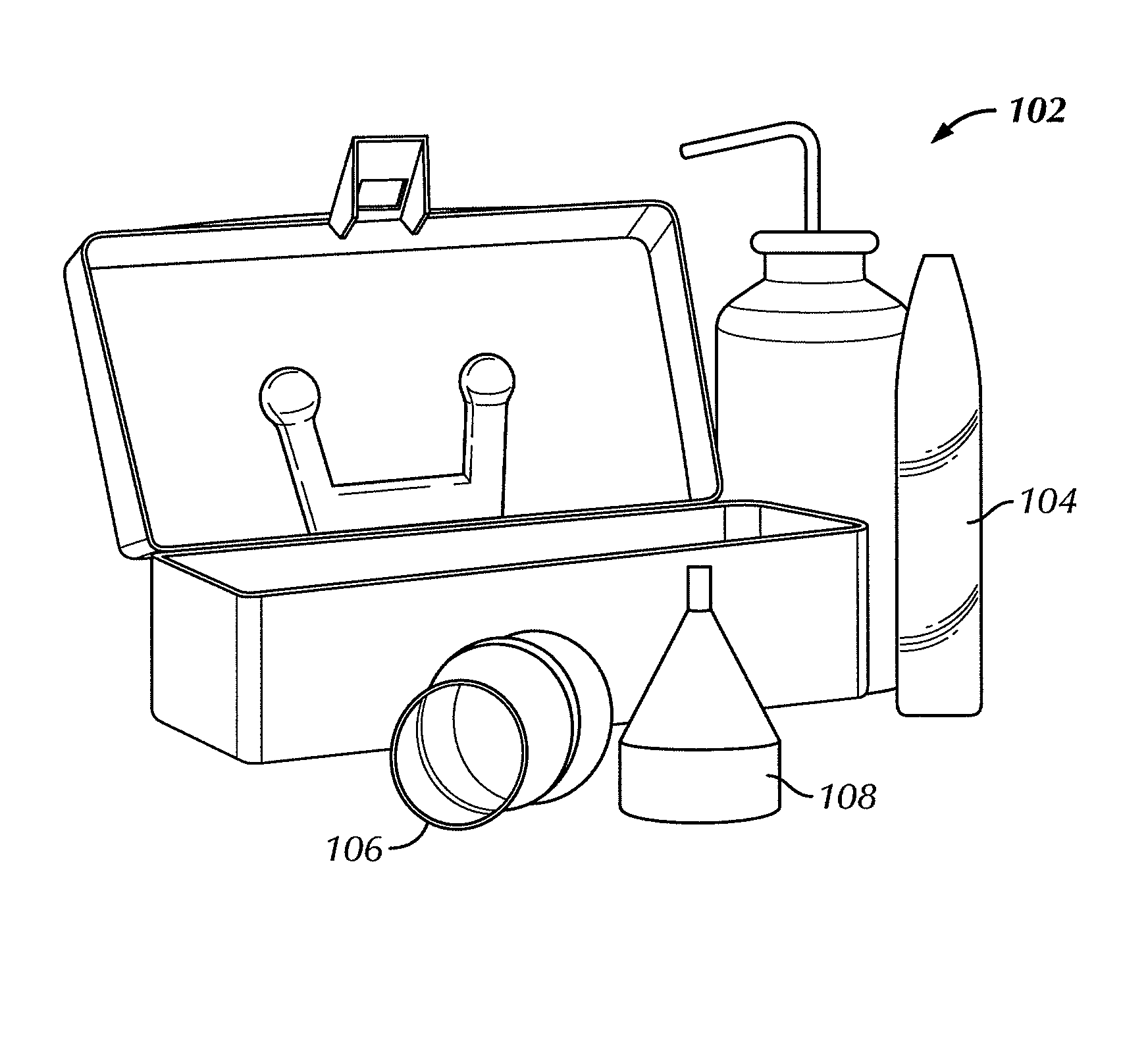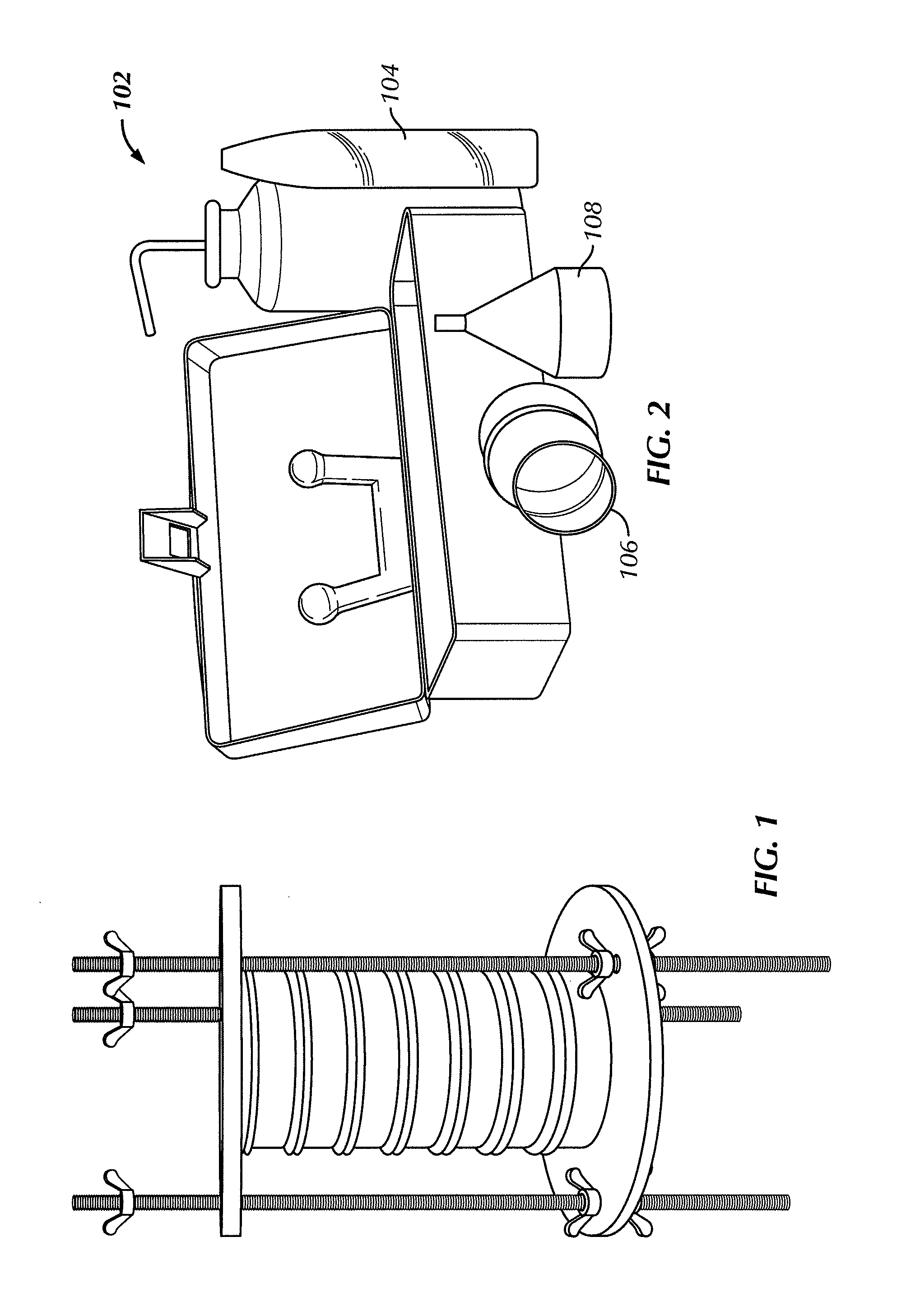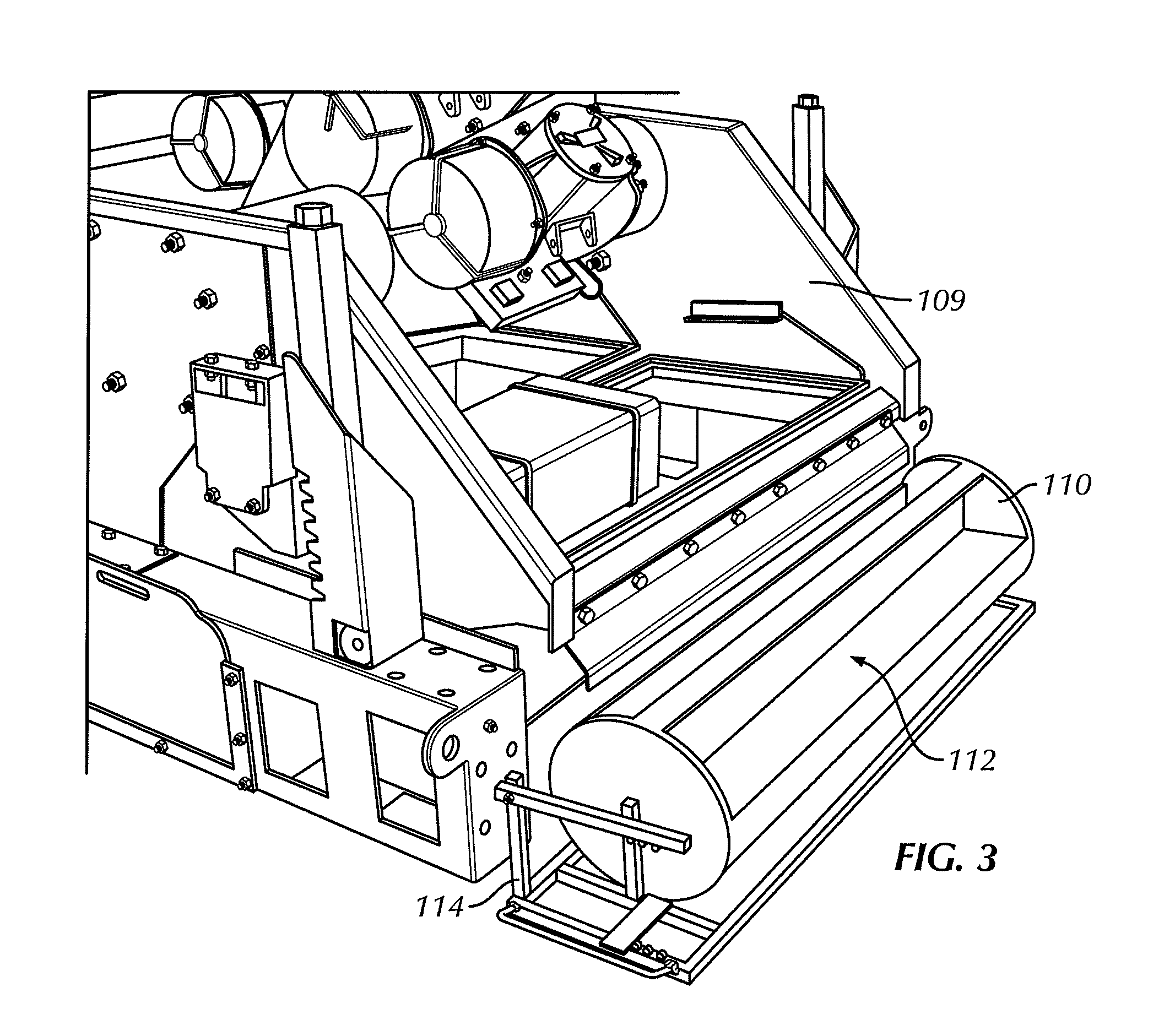Test procedure to determine concentration and relative distribution of sized particles in a drilling fluid
- Summary
- Abstract
- Description
- Claims
- Application Information
AI Technical Summary
Benefits of technology
Problems solved by technology
Method used
Image
Examples
example 1
Portable Wet-Sieving Device Test
[0068]An example of a portable wet-sieving device in accordance with embodiments disclosed herein is now described. As shown in FIGS. 8A-8D, the portable wet-sieving device 220 includes a section of PVC-DWV 222, schedule 40, with a 3 inch inner diameter, 3 7 / 16 inch outer diameter, and approximately 1.5 feet long, three flexible rubber couplings 230 with 3⅜ inch inner diameters, two PVC-DWV schedule 40 couplings 224 with 3 inch inner diameters, 3 7 / 16 inch outer diameter, and approximately 2 inches long, eight 3-inch hose clamps 226, and three sieves 228 with 3 inch inner diameters, 3¼ inch outer diameter.
[0069]To assemble the portable wet-sieving device 220, place a hose-clamp 226 on the outside of one of the couplings 230, and insert a sieve 228 into one of the flexible rubber couplings, both about 1.5″ from the top of the coupling. Tighten the clamp 226 until it is snug, allowing for a good seal around the sieve 228. Repeat these steps with the oth...
example 2
Portable Wet-Sieving Device
[0082]Another example of a portable wet-sieving device in accordance with embodiments disclosed herein is now described. As shown in FIGS. 9A and 9B, the wet-sieving device includes two flat steel plates, three ¼ inch threaded steel rods that are 1 foot long, nine wing nuts that fit the ¼ inch threaded rods, 3-inch sieves, and o-rings that tightly fit the sieves. The two flat steel plates are ¼ inch thick, have a 6-inch outer diameter, 2.5 inches inner diameter cut out, and three ¼ inch holes are drilled ½ inch from the outer edge of the plates, wherein the holes are spaces at 120 degrees from each other.
[0083]To assemble the wet-sieve device of FIGS. 9A and 9B, the threaded rods are inserted two inches into one plate through the ¼ inch holes. Wing nuts, two for each rod, are treaded onto the rods from both sides of the plate and secured tightly. The apparatus at this point needs to be stood horizontally on the ends of three rods that are closest to the pl...
example 3
Portable Wet-Sieving Device
[0084]Another example of a portable wet-sieving device in accordance with embodiments disclosed herein is now described. As shown in FIGS. 10A and 10B, the wet-sieving device includes two flat steel plates, one C-clamp 3.5 inches by one foot ¼ inch thick, 3-inch sieves, and o-rings that tightly fit the sieves. In this example, the two flat steel plates have 3.5-inch outer diameters, 2.75 inches inner diameter cut out, except for a strip 0.5 inches wide in the middle of the plate.
[0085]To assemble the wet-sieve device of FIGS. 10A and 10B, weld the center of the clamps face, while keeping the plates horizontal, running parallel to each other. Open the clamp and insert a stack of sieves. Each sieve would be fitted with an O-ring to create a seal between two interlocking sieves. Stack the sieves one on the other with the smallest micron sized sieve to the largest micron size sieve. The stack of sieves would then be places on the center of the plates. Tighten ...
PUM
 Login to View More
Login to View More Abstract
Description
Claims
Application Information
 Login to View More
Login to View More - R&D
- Intellectual Property
- Life Sciences
- Materials
- Tech Scout
- Unparalleled Data Quality
- Higher Quality Content
- 60% Fewer Hallucinations
Browse by: Latest US Patents, China's latest patents, Technical Efficacy Thesaurus, Application Domain, Technology Topic, Popular Technical Reports.
© 2025 PatSnap. All rights reserved.Legal|Privacy policy|Modern Slavery Act Transparency Statement|Sitemap|About US| Contact US: help@patsnap.com



